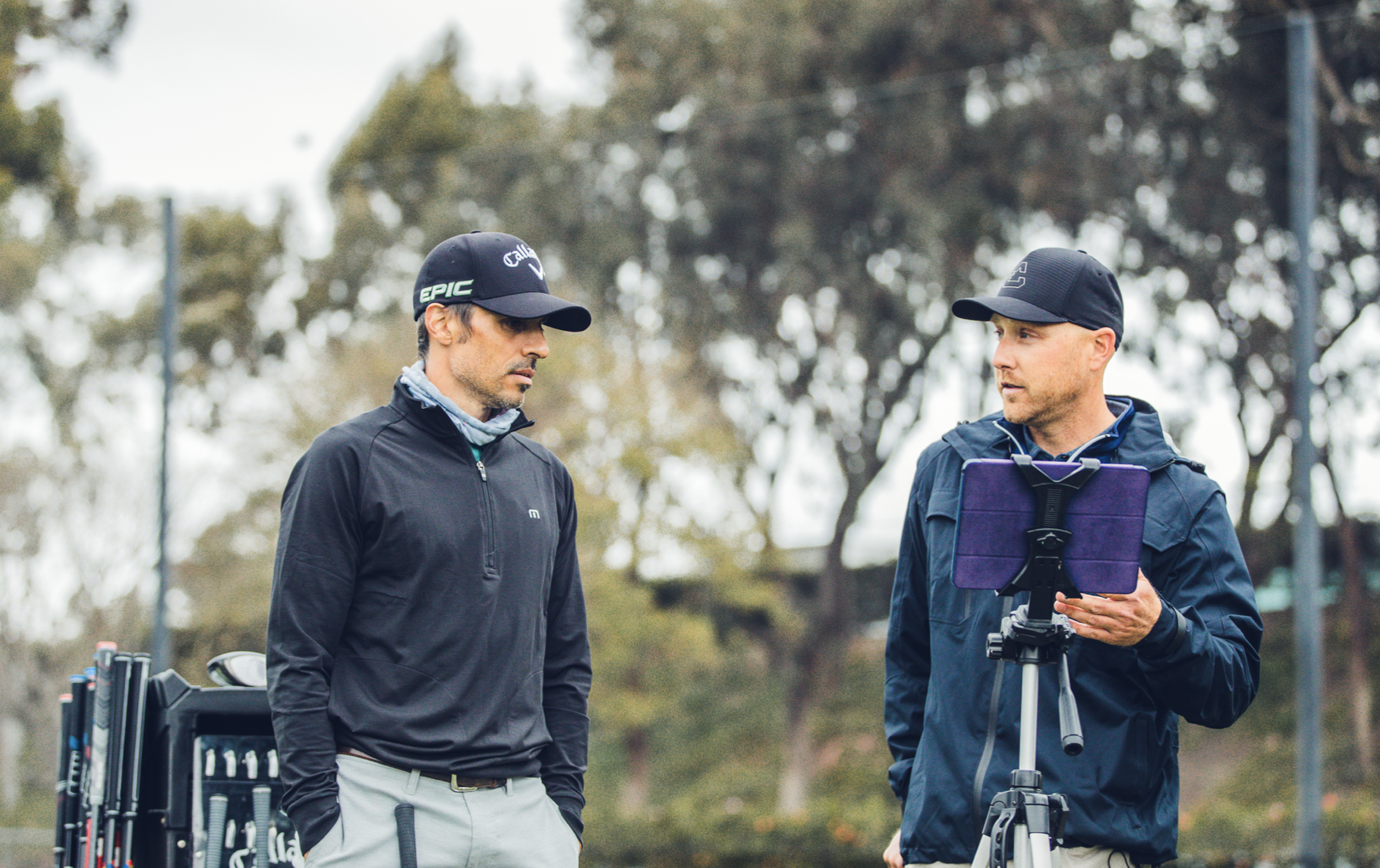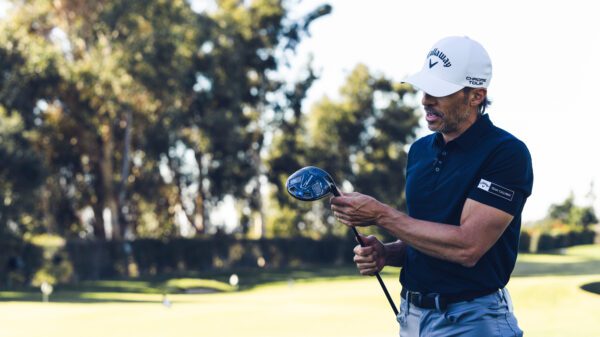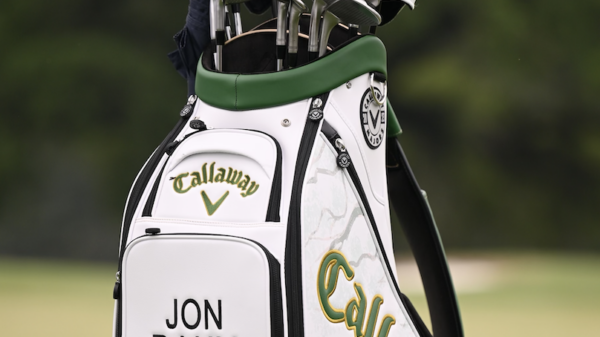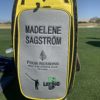During my three-year run at GolfWRX.com, I had access to some pretty amazing things. From early looks at equipment to Tour rep relationships and even a few players I’m grateful to now call friends. The one thing that always piqued my interest the most was watching the best fitters in the game do their thing. People like Ian Fraser (TXG), Gerrit Pon (Callaway), Brandon Dickinson (Cobra), Joey Saewitz (Titleist), Dave Cunningham (PXG), and my dear friends Bryan Laroche (@bryangolf) and Adrian Rietveld (TaylorMade).
The cool thing about a fitting is that you aren’t necessarily solely relying on the launch data (Trackman, Foresight, etc.) to get dialed in. The real juice is coming from the eyes and ears of a REALLY good fitter if you are fortunate enough to work with one.
The question I get the most via DM or Email is “Who is the best fitter and why?”
Well, the answer to that is easy actually. There are a TON of talented club whisperers in every state so to pinpoint one would be well….dumb. The best way to answer this is to give you a list of what all the best fitters do and things YOU can do to ensure you get your money’s worth.
Let’s start with the fitters. All the names listed above had their own unique spin on getting my bag dialed and truth be told, their efforts all resulted in clubs that I LOVED. As different as the tactics may have felt, there were very specific similarities they all shared, and in my opinion, these were the things that made them master class.
Top things that all the best fitters do:
- It all starts with hitting it out of the middle: Consistent center contact is the foundation of every great club I’ve ever had. Yes, even high handicappers can find a club (or clubs) that they hit out of the middle more often than not. The reason solid contact is key is it gives the fitter and player a solid foundation to grow from. Distance, trajectory, dispersion all the sexy catchphrases we use to describe a shot starts with hitting it out of the guts. Now you may be saying “no kidding Wunder that’s obvious” but it isn’t. Hitting it far is a tough battle to win in a fitting, most casual players are dying to hit their 7 iron 170. It’s up to the fitter to bring them back to reality and continue to focus on the things that actually matter which are center contact, big miss mitigation, and (in my opinion) runway to grow.
Consistent center contact represents a few VERY important things. #1 Proper lie angle #2 Proper shaft (or at least in the ballpark) #3 Proper weight of the club (Swingweight and Overall) #4 Proper length. If this was a movie, center contact gets you thru the first 2 acts and into the finale. - Miss management and versatility: TXG’s Ian Fraser was the guy who taught me this one. In every fitting I ever had with him, working around the “big miss” was always the focus and I’m not talking about fighting a slice or a duck hook. I’m talking about the better players big miss. You know the one: 16 holes in and you’re about to break par for the first time. Standing on a par 5 licking your chops, pumped up and you hit one dead nuts out of the middle… the only problem is it’s a block 40 yards to the right and eventually OB.
Rally killer. That’s the “big miss”.
Ian was always a whiz at making what I did naturally that much better and protecting my whole set from those bone head moments when the adrenaline wasn’t my friend.
Can you eliminate that bad shot altogether? No.
Can you soften it to where you might actually find it? Yes.
Good fitters think about the small stuff.
Versatility is another gem that all clubs should have. Can you hit all the shots you need to make a score? During a fitting a couple of years ago, I was working with a fitter on 3 and 5 woods. After striping it for over an hour the fitter stopped me just before I was ready to finish and said. “OK, what’s gonna be your emergency club?” I had no answer. I was in a groove, I was dialed, right? Nope.
“You are swinging it well today, your timing is on, what happens when it’s not?”
The fitter then went in and started working in a fairway finder with my 5-wood. It still did everything from before but now when I wasn’t at my best I could play this 5-wood back in my stance, beat down on it and the ball would fly like a knee-high fastball 240 down the pipe. That thing came in handy a ton in the coming months. The guy could have let me walk away happy and ready to shoot 65, but no, he was thinking about everything. That’s a good fitter. That’s versatility. - The bag is harmonious: This one is big. You get 14 clubs to play with and each stick has a job to do. Set make-ups aren’t an exact science and there are no rules to how it’s put together. I remember a fitter who once told me that the only club in the bag that needs to go as far as possible is the driver and that you don’t gap off of the driver necessarily. It’s the one club in the bag that lives on an island. From the 3-wood on down, it’s a different story. Sometimes that gets confused. Players want to hit everything as far as possible but unfortunately, that’s a recipe for disaster. Take the 3-wood, for example, sure it would be great to hit it a mile but that’s not the job it’s assigned to do. It has to work off the tee, the ground, be a potential emergency club, it has to spin outta parts, not spin out of others and hopefully be the club you can move both ways. Nowhere in there does it say hit high, nasty, vicious, bombs. Good fitters know this and will make sure versatility wins and distance lives somewhere down the totem pole. Going the distance route not only messes up the gapping but will more than likely limit a tool that needs to do 10 things, why would any player want that?
Here are a few tips to consider when going in for any fitting, some of you may do this already but for those that don’t here you go:
- Be brutally honest about your game: Any skeletons need to be exposed in a fitting, the final product will suffer if you don’t.
- Be open-minded to all brands and types of clubs: Callaway will win but stay open-minded anyway.
- Go to a fitting when you are playing well: Monitor your progress in the weeks going in and hit some balls to get into a rhythm. If you go in and can’t find the clubface it’s a waste of time, trust me I’ve done it.
- Ask a 💩 load of questions: not in an effort to keep the fitter on their toes but to understand the why of it all. The more you know about your potential tools the better they will be.
- Don’t just go in and pound balls mindlessly: Take your time, consider each shot and go from there.
- Check Your Ego at the door: Do you wanna play well or have cool sticks and shoot a million? Should be easy to answer.
- Don’t speed date fitters: It’s not Tinder folks. Most reputable fitters are well trained and are fully capable of dialing you in. If you find a good fitter in your hometown, stay loyal to that fitter. He/She is your new home base. The more you shop around, the more info and differing opinions you will get. The point is, they can all beat each other. I’ve had clubs that I knew were unbeatable and sure enough they got beat and then that club got beat and on and on. Who gets hurt in that scenario? You. Why? Because a good fitting can last a long time if you leave it behind and GO PLAY GOLF!!! The degenerate gear heads will know what I’m talking about.
- The launch numbers help but they aren’t God: Listen to what the fitter is seeing and hearing first and foremost. The data is a guide but it ain’t the whole story, especially if you get fit outside.
Hope this all makes sense:) Happy Hunting
JDUB




















John
May 17, 2021 at 3:28 pm
Still miss the GolfWRX days but the content here has been tremendous! Keep on keepin on! Great stuff!
Johnny Wunder
May 18, 2021 at 12:53 am
Thanks!!
John
May 18, 2021 at 12:32 am
I have been playing this wonderful game for over 40 years and I really appreciate your guidance and sound fundamental guidance when it comes to club fitting….thank you!
Johnny Wunder
May 18, 2021 at 12:54 am
Glad you enjoyed it!!